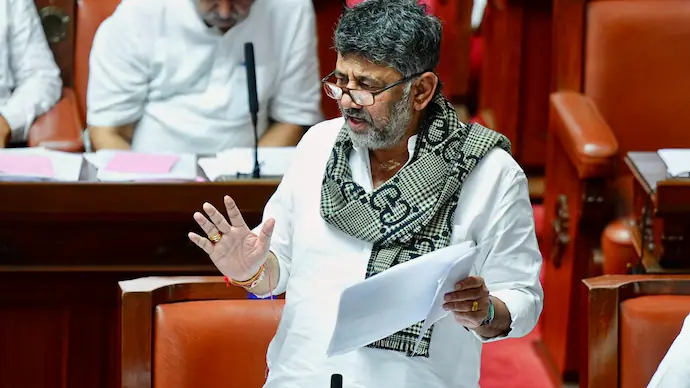Table of Content
The Karnataka Legislative Assembly has passed the Greater Bengaluru Governance Bill, 2025, paving the way for one of the most ambitious reforms in the city’s civic administration. Designed to decentralise Bengaluru’s sprawling municipal governance, the Bill aims to restructure the existing framework into smaller, more accountable units while ensuring better coordination across the metropolitan region. For a city grappling with rapid urbanisation, infrastructure bottlenecks, and fragmented planning, the move is seen as a major step towards building a more efficient governance model.
Key Provisions of the Greater Bengaluru Governance Bill
The Greater Bengaluru Governance Bill introduces sweeping structural changes to replace the current Bruhat Bengaluru Mahanagara Palike (BBMP) model with a decentralised civic framework.
- The BBMP will be divided into five new corporations Central, North, East, West, and South, each with its own mayor, councillors, and administrative setup.
- A new Greater Bengaluru Authority (GBA) will act as the supervisory body responsible for integrated metropolitan planning.
- Deputy Chief Minister DK Shivakumar, who presented the Bill, assured that the GBA will not interfere with the day-to-day functions of these corporations.
- The provisions of the 74th Constitutional Amendment remain intact, safeguarding the powers of local bodies, financial independence, and electoral guarantees.
This restructuring intends to balance autonomy at the corporation level with a city-wide vision under the GBA.
Also Read: ‘Land in 10 Minutes’: Delhi-NCR Buyers Can Now Book Plots Instantly on Zepto
Why the Bill Was Introduced
For years, Bengaluru’s governance model has struggled with the weight of managing a city spread across 700 sq km and housing over 13 million residents. The BBMP, despite its size, often found itself overwhelmed, leading to inefficiencies in civic services, poor coordination among agencies, and uneven infrastructure growth.
The Greater Bengaluru Governance Bill addresses these challenges by decentralising administration, making governance more responsive to local needs, and ensuring faster decision-making. By introducing smaller corporations, the government hopes to create a more transparent, accountable, and citizen-focused model that can keep pace with Bengaluru’s rapid urban expansion.
The Role of the Greater Bengaluru Authority (GBA)
A crucial aspect of the Bill is the establishment of the Greater Bengaluru Authority (GBA). While the five corporations will handle local governance, the GBA will serve as an overarching body for the larger metropolitan area.
- Its jurisdiction is expected to cover nearly 1,000 sq km, absorbing peripheral villages and semi-urban areas into Bengaluru’s formal governance framework.
- The GBA will bring together civic and infrastructure agencies such as the Bengaluru Development Authority (BDA), Bangalore Water Supply and Sewerage Board (BWSSB), and Bengaluru Metropolitan Transport Corporation (BMTC).
- This integrated framework is aimed at overcoming the city’s chronic problem of fragmented governance and ensuring more cohesive urban planning.
Impact on Governance and Civic Services
With decentralisation, the city’s governance structure is expected to become more citizen-centric.
- Localised decision-making: Mayors and councillors of the five corporations will have more authority to respond to ward-level issues.
- Stronger coordination: Unified planning under the GBA should lead to better alignment of civic projects, reducing duplication and delays.
- Accountability and transparency: Smaller administrative units are likely to bring governance closer to citizens, making service delivery more efficient.
This layered governance model is expected to tackle Bengaluru’s complex infrastructure challenges more effectively than the earlier centralised system.
Real Estate and Economic Implications
Beyond governance, the Greater Bengaluru Governance Bill is set to significantly influence the city’s real estate and economic landscape.
- Land values in peri-urban and adjoining areas are projected to rise as they come under the metropolitan fold.
- The decentralisation model could foster the development of new commercial hubs beyond established zones like Whitefield, Outer Ring Road, and Central Business District.
- With upcoming metro and suburban rail networks, these new hubs may offer businesses and residents improved connectivity and quality of life.
Urban planners believe this could mark the beginning of a more balanced economic geography for Bengaluru, distributing growth across the city rather than concentrating it in a handful of neighbourhoods.
Expert and Citizen Perspectives
Civic experts and activists have welcomed the Bill for attempting to address the city’s governance crisis. They argue that decentralisation, if implemented effectively, could unlock efficiencies long missing from Bengaluru’s administration.
At the same time, there are concerns about implementation challenges, potential overlaps in jurisdiction, and the clarity of roles between the GBA and the corporations. Citizens hope that the reform will not remain a paper exercise but translate into visible improvements in civic life, from waste management to road infrastructure.
Also Read: Bengaluru Surpasses Mumbai, Ranks 4th Globally in Premium Property Price Growth
Outlook for Bengaluru’s Future
The passage of the Greater Bengaluru Governance Bill represents more than just administrative restructuring it is a blueprint for the future of India’s tech capital. If executed successfully, Bengaluru could emerge as a model for metropolitan governance, inspiring similar reforms in other fast-growing Indian cities.
By empowering local bodies while ensuring cohesive metropolitan planning, the Bill lays the foundation for a more sustainable, inclusive, and resilient urban future.
Conclusion
The Greater Bengaluru Governance Bill is a landmark reform that promises to reshape the way India’s Silicon Valley is governed. By breaking down a massive civic body into smaller, more accountable corporations and introducing a metropolitan authority for integrated planning, the Bill strikes a balance between decentralisation and coordinated growth.
While challenges remain in its execution, the legislation reflects a decisive step towards addressing Bengaluru’s governance crisis and preparing the city for its next phase of growth. If implemented effectively, the Bill could redefine not only Bengaluru’s civic landscape but also the broader narrative of urban governance in India.
Follow AquireAcers Whatsapp Channel to Stay Updated With The Latest Real Estate News







Ans 1. The Bill aims to decentralise Bengaluru’s civic administration by breaking down the BBMP into smaller corporations, making governance more responsive, accountable, and efficient while ensuring city-wide planning through the Greater Bengaluru Authority.
Ans 2. The existing BBMP will be divided into five separate corporations Central, North, East, West, and South. Each will have its own mayor, councillors, and administration, allowing for better focus on local civic needs.
Ans 3. The GBA will function as a metropolitan-level supervisory body, coordinating agencies like BDA, BWSSB, and BMTC. It will focus on integrated planning and development across nearly 1,000 sq km, including peripheral areas.
Ans 4. Citizens are expected to benefit from quicker responses to local issues, better coordination of civic services, and improved transparency in administration. Decentralisation brings governance closer to neighborhoods, making it more citizen-centric.
Ans 5. No, the provisions of the 74th Constitutional Amendment remain intact. Local bodies retain their powers, financial independence, and electoral guarantees while also gaining stronger coordination under the GBA.
Ans 6. The BBMP was struggling to manage the demands of a rapidly growing city with over 13 million residents. Decentralisation helps distribute administrative responsibilities, prevent inefficiencies, and improve infrastructure planning across the city.
Ans 7. By including peri-urban and adjoining areas in formal governance, land values in these regions are likely to rise. The creation of new commercial hubs beyond established zones may also help distribute economic growth more evenly across Bengaluru.
Ans 8. Yes, some experts worry about overlaps in jurisdiction and the division of roles between the GBA and the new corporations. Citizens also stress that reforms must translate into real improvements in areas like waste management, traffic, and infrastructure.
Ans 9. Unlike the centralised BBMP structure, the new model introduces multiple corporations for localized administration while keeping metropolitan planning under a unified authority. This hybrid model is designed to balance autonomy with coordination.
Ans 10. If executed effectively, the Bill could transform Bengaluru into a model for metropolitan governance in India. By combining decentralisation with integrated planning, it sets the stage for a more sustainable and inclusive future for the city.